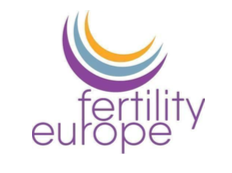Aetiology and the diagnostic journey

When 41-year-old Stefano began having trouble conceiving with his wife eight years ago, he thought the issues may be related to her, not him. Following a number of unsuccessful attempts, Stefano’s wife Sara decided to undergo specialized hormonal and gynaecological examinations which resulted in Sara being diagnosed with endometriosis. This diagnosis, together with Sara’s age and duration of infertility compelled the fertility specialist to consider both Sara and Stefano in the assisted reproductive technology (ART) treatment. Until this point, Stefano had not been assessed at all by a clinician, with his general practitioner simply suggesting “it’s just a matter of luck, keep trying”.
They began the in vitro fertilization (IVF) process with Sara undergoing hormonal, genetic and ultrasound investigations. Stefano also underwent genetic investigations and semen analysis. Although the genetic tests did not show any abnormalities, the semen analysis highlighted a reduced sperm count, with a significant reduction in sperm motility. “When the fertility specialist informed me that I had a low sperm count and reduced sperm quality”, said Stefano, “it was a real blow to my self-esteem and who I thought I was as a man”.
Despite the results, the fertility specialist gave new hope to the couple, explaining that nowadays, IVF methods with intra-cytoplasmic sperm injection (ICSI) can enable men to overcome the difficulties related to a reduced sperm count or quality. Sara underwent her first controlled ovarian stimulation, through which twelve oocytes were recovered, of which seven were fertilized. Waiting for the result of their first IVF cycle was an exciting time for Stefano and Sara, potentially bringing a light to the end of the tunnel. However, despite the excitement, Sara did not become pregnant. The couple endured additional eight cycles of IVF over 5 years, but sadly each attempt was unsuccessful.
Each failed attempt caused significant psychological and emotional distress for the couple. When Stefano visited my clinic to seek advice from an Andrologist (a doctor specializing in male reproduction and urology), he reported feeling depressed, anxious, uneasy, and an overwhelming sense of inadequacy as a partner. He also reported erectile dysfunction and loss of libido. Although these symptoms are common in the male partner of infertile couples, the impact they have on an individual should not be underestimated by the clinician.
Using Stefano’s genetic investigation reports and semen analyses, I was able to conduct routine tests to check for male infertility. Firstly, I asked Stefano about his medical history and he reported a previous surgical treatment for unilateral cryptorchidism, a condition in which one of his testicles did not move into the scrotal sac during his fetal development. He did not smoke and or take drugs. I also carried out a physical and andrological examinations, which showed testes with normal size and consistency, without palpable nodules and no signs of varicocele.
The third test was a semen analysis of a sample which confirmed the previously detected reduction in sperm count, motility and morphology – as condition we call oligo-astheno-teratozoospermia. A significant reduction in semen volume was also highlighted.
Finally, a hormonal analysis was carried out using a blood sample. A mild case of hypogonadotropic hypogonadism (lower than normal levels of hormones secreted by his pituitary gland) was detected, with testosterone serum levels slightly reduced. The pituitary hormones are normally secreted to stimulate gonads and produce testosterone and sperm cells. Having lower than normal levels of this hormone could be the cause of Stefano’s reduced semen quality and count. Stefano started treatment in the form of exogenous administration of gonadotropins. After six months of therapy, a significant improvement in both semen analysis and testosterone serum levels was seen. Following this result, the couple underwent another ICSI cycle and two months after embryo transfer, and after years of trying, Sara was finally pregnant.
Reproductive medicine societies worldwide advise that all couples who have been trying to get pregnant for a year should seek medical help. The medical help and advice should be given to both partners. As we have seen from this story, treatment for both male and female partners can increase the couple’s chances of getting pregnant. The infertility journey can be very stressful and it is important to remember that clinicians should prioritise not just the physical health of a couple, but their psychological health too.
Daniele Santi MD, PhD Assistant Professor in Endocrinology Unit of Endocrinology Department of Biomedical, Metabolic and Neural Science University of Modena and Reggio Emilia
This article has been brought to you with the support of Merck KGaA, for more information please visit merckgroup.com
